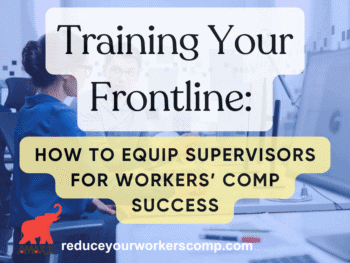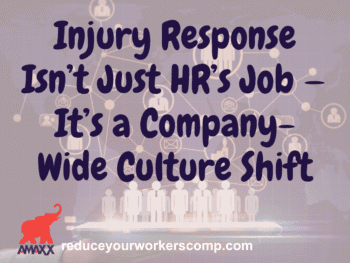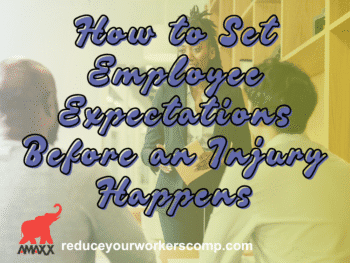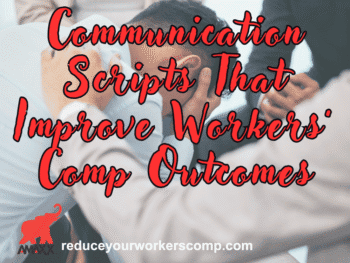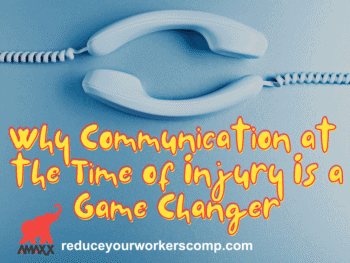Tight Post Injury Procedures Reduce Costs
Post injury procedures keep the circle of control between employees, the employer and the doctor. Companies need to have a tight post injury response procedure to keep down workers’ compensation costs. It is important to have a procedure in place to address an injury immediately after and for the first twenty-four to forty-eight hours after the injury. This is because there must be communication between the employee, the doctor and the employer. Nothing can be left to chance.
There should be a contained process so that communication with the employee and the doctor moves in a continuous loop. Without this continuity, the employee and the doctor may become fragmented, breaking off from the employer, with the employee remaining out of work as a result. A tightly controlled post-injury response procedure keeps control of the communication process among the three parties: employee, employer and physician. If communication between these parties is in place, it is much more likely that the employee will return to work in a prudent but timely manner.
Click Link to Access Free PDF Download
“9-Element Blueprint To Create Your Workers’ Comp Employee Brochure”
Employer’s Communication Most Important
The most important part of this procedure is the employer’s communication contact. The employer must have a responsible employee to serve as the primary contact point who is willing to take charge of immediate contacts and keeps this communication loop flowing. Of course, all your employees, managers and supervisors must know the name and phone number of this key contact person. Make sure the key contact’s name and contact information is posted prominently in all policy manuals, workers’ compensation communications and employee bulletin boards.
Employee Communication
Another important part of this procedure is the employee’s willingness to communicate. Employers should cultivate a workplace atmosphere that fosters and expects communication. Employees should be made aware of the fact that they are expected to not only communicate the fact of an injury, but also regularly update the employer about the course of the injury, particularly in its initial stages. Having one key, easy to reach contact person for the employee makes it much easier for an injured employee to keep in touch. Employers should not make injured employees make numerous calls to different departments or people to repeat the same information. It goes without saying that the contact person needs to be patient and kind while an injured employee (or their family member) who may be in pain or shock describes unfamiliar medical procedures, medications and treatment.
Medical Provider Communication
The medical providers are the third important component of this communication loop. Under law, the employee must sign the appropriate releases for the employee’s doctors to provide the employer with confidential medical information. Make sure the employee’s understand the expectation that they will sign these releases and that you all share the same goal of getting the employee well and back to work as soon as possible.
Author Michael B. Stack, CPA, Director of Operations, Amaxx Risk Solutions, Inc. is an expert in employer communication systems and part of the Amaxx team helping companies reduce their workers compensation costs by 20% to 50%. He is a writer, speaker, and website publisher. www.reduceyourworkerscomp.com.
Contact: mstack@reduceyourworkerscomp.com.
©2012 Amaxx Risk Solutions, Inc. All rights reserved under International Copyright Law.





